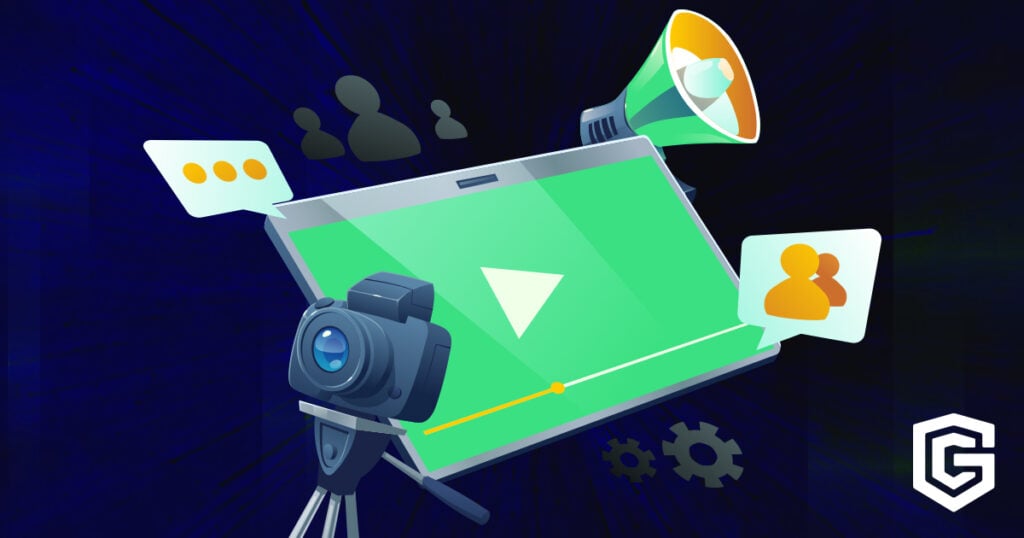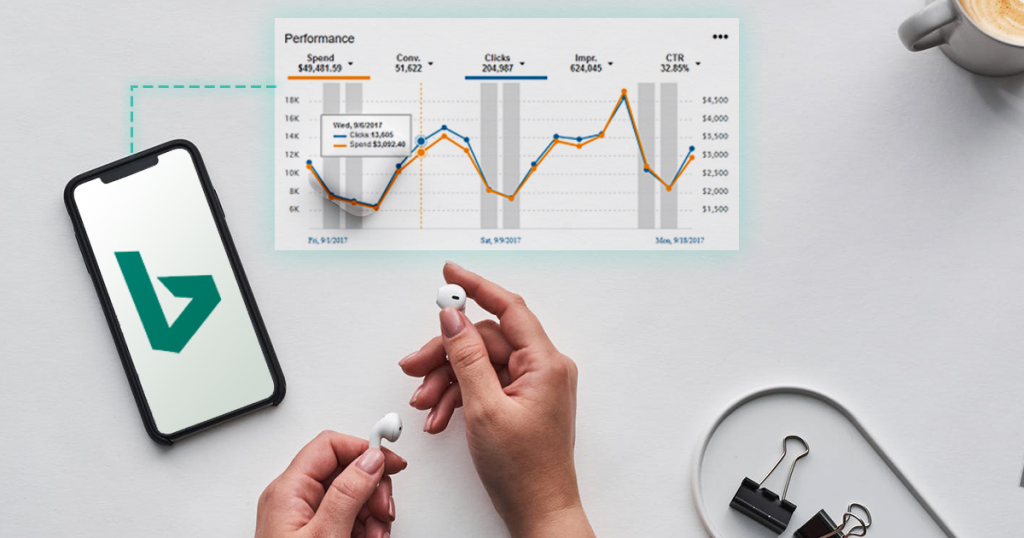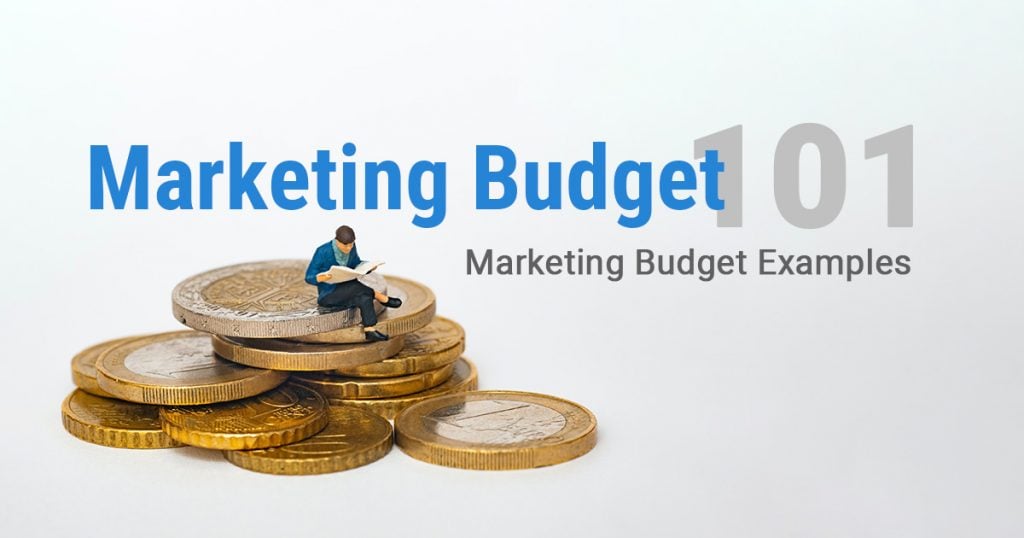Did you know that over 1 billion hours of content are being watched on YouTube across the world every day? This makes it both the largest video platform in the world – and the second most visited website after Google. YouTube provides a plethora of content options that cater to all interests and curiosities. Whether it’s cooking, music, fashion, technology, or even obscure hobbies, there is a video for every topic imaginable.
But YouTube is more than a great place to keep us entertained with endless hours of content – it is also the perfect platform for brands to reach a massive audience with more engaging video ad campaigns. These campaigns also offer a wide range of targeting options, allowing businesses to reach their ideal audience based on factors such as demographics, unique interests, and search history. Additionally, with a variety of ad formats available, businesses can tailor their video campaigns to meet their specific marketing goals.
There are many tools and strategies advertisers can utilize to maximize the effectiveness of their video ad campaigns. In this guide, we will be covering the best ways to choose your video ad campaign goals, selecting appropriate bidding strategies and ad formats, analyzing key metrics through analytics, and best practices for creating compelling content that resonates with viewers. Let’s dive into it.
1. Choose your goals wisely
When setting up your Video ad on your Google ads account, it is important that your choice of campaign goal aligns with what you want to achieve with your campaign. After you’ve chosen between sales, leads, website traffic, product and brand consideration, or brand awareness and reach, your goal will decide what campaign subtype you can choose. While the campaign goals are somewhat self-explanatory, choosing the right subtype can get a little trickier. Your subtype options are as follows:
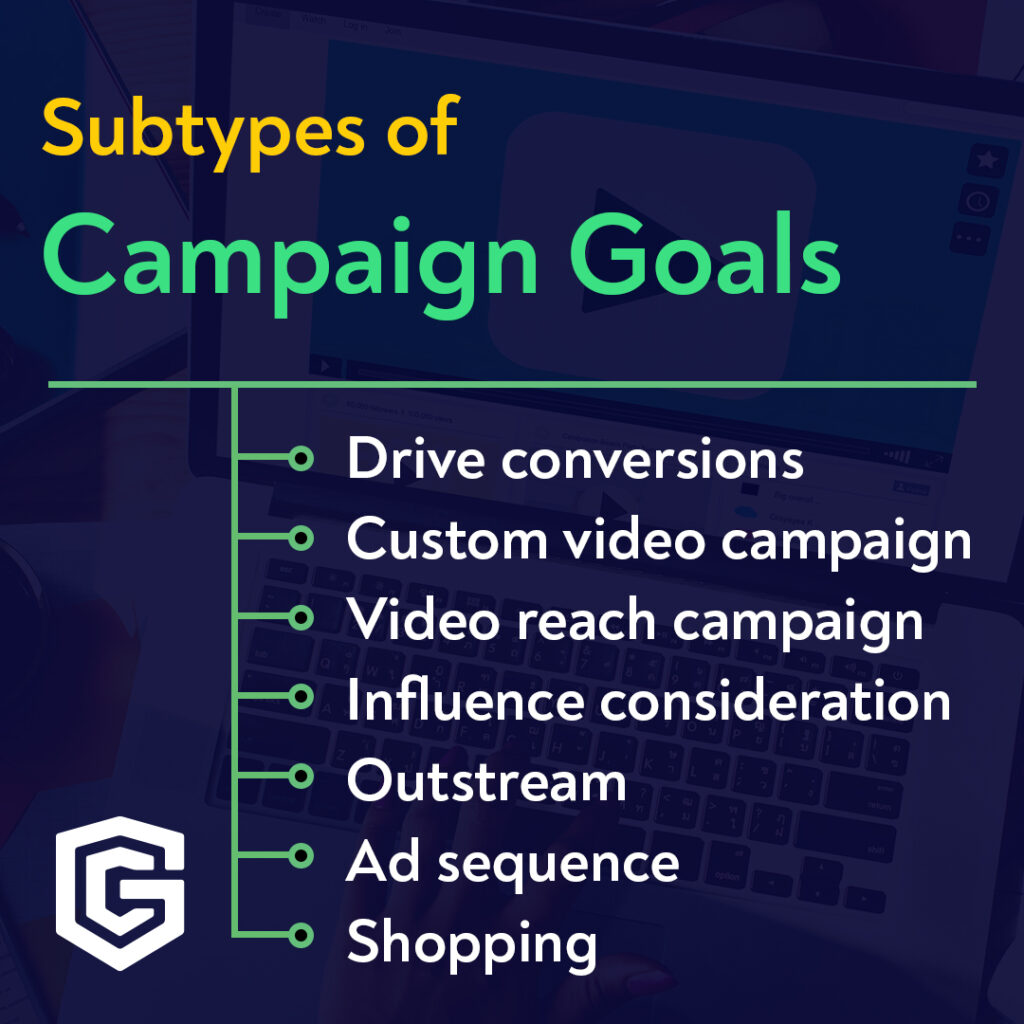
- Drive conversions: Increase your sales and leads by using action-oriented ads and targeting strategies that encourage viewers to take action.
- Custom video campaign: Create a personalized advertising campaign with a variety of ad formats that match your specific needs and goals.
- Video reach campaign: Maximize your budget by choosing between bumper ads, skippable in-stream ads, or both in an efficient reach campaign. Alternatively, use non-skippable in-stream ads to deliver your entire message to viewers.
- Influence consideration: Encourage viewers to consider your product by using compelling ads that highlight the benefits and unique features of your product or service.
- Outstream: Optimize your ads for mobile devices such as phones and tablets with tailored ad formats that provide a seamless viewing experience.
- Ad sequence: Tell a story and build engagement by creating a series of ads that are strategically placed in a sequence.
- Shopping: Boost sales and drive traffic to your website by promoting your products and services with targeted shopping ads.
Keep in mind that your chosen campaign goal and subtype decide both the available ad networks where advertisements can appear and the types of ad formats that can be utilized within the campaign.
2. Make Every Penny Count
Your budget plays a significant role in determining the frequency and prominence of your ads. However, your bidding strategy is equally important as it determines how your budget is spent. Depending on your goals, you can choose to allocate your budget towards achieving ad views, clicks, or conversions. Here is a breakdown of the types of bidding strategies for video ads:
| CPV (Cost per view) | CPM (Cost per thousand impressions) | vCPM (Cost per viewable thousand impressions) | Target CPA (Cost per acquisition) | Target OAS (Return on ad spend) | Maximize Conversions | Maximize conversion value | |
| Requires conversions? | No | No | No | Yes | Yes | Yes | Yes |
| Manual or automated? | Manual | Manual | Manual | Automated | Automated | Automated | Automated |
| How are you charged? | Per view | Per 1,000 impressions | Per 1,000 viewable impressions | Per 1,000 impressions | Per 1,000 impressions | Per 1,000 impressions | Per 1,000 impressions |
| What does it optimize for? | You decide | You decide | You decide | Conversions at target | Return on ad spend | Conversions | Conversion value |
If your campaign is spending the entire budget and reaching the daily limit or average per day budget, consider scaling up by increasing your budget. If not, you may need to adjust your targeting, bidding, and ad content to improve performance.
Pro tip: You don’t always have to create your own customized media plan. Google’s Reach Planner can choose recommended reach, ad formats, budget allocations – and a lot more – for you. Furthermore, Google’s Smart Bidding can be used to optimize your video ad bidding strategies using machine learning.
3. Diversify Your Video Formats
When it comes to digital advertising, every video format has its own strengths and weaknesses. That is why it is often wiser to use multiple video formats to maximize the effectiveness of your video ad campaigns. Here are the types of video ad formats you can choose from and their best uses:
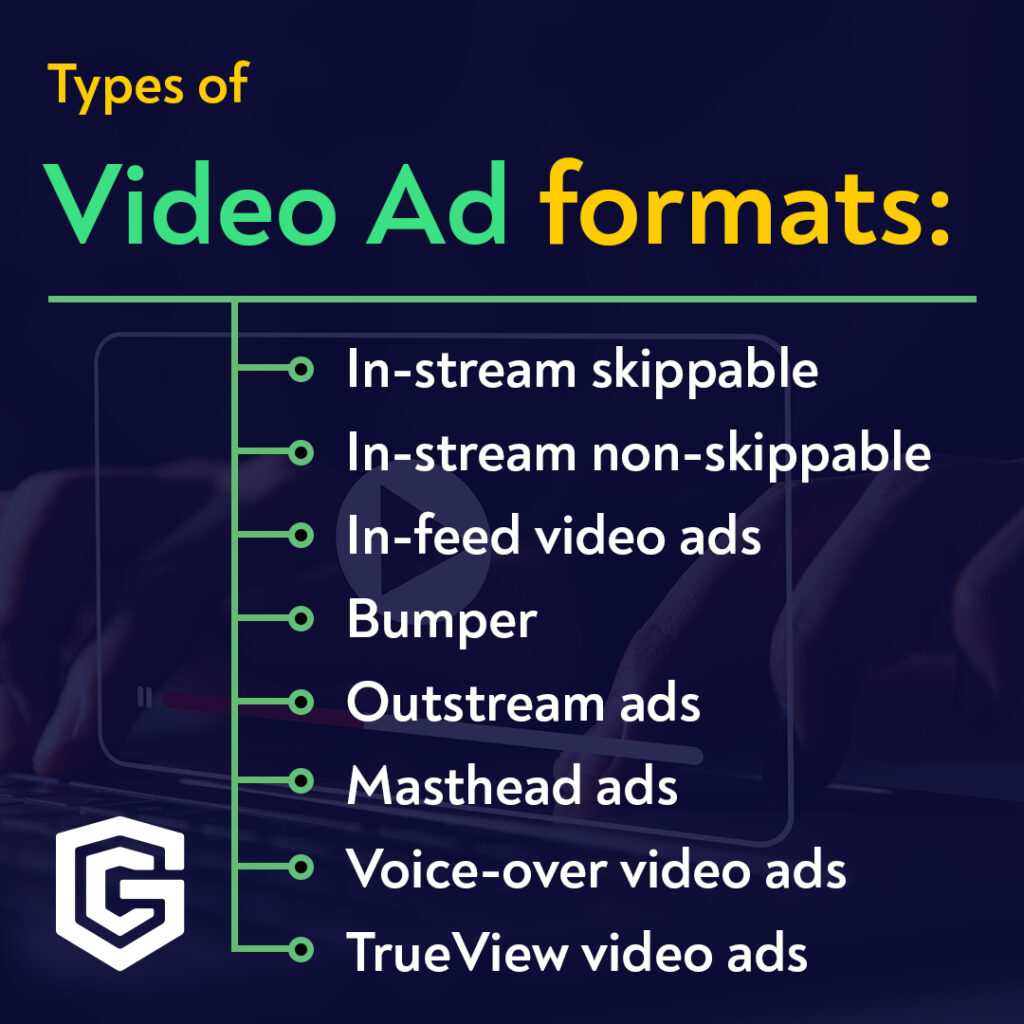
- In-stream skippable: This format can be 12 seconds to 6 minutes long. And because viewers have the option to skip the ad after 5 seconds, it is best for remarketing purposes.
- In-stream non-skippable: This format is usually 15-20 seconds long (depending on the region) and is ideal for building brand awareness.
- In-feed video ads: In-feed video ads (previously known as “Video discovery ads”) are an effective way to promote your video content in various discovery locations on YouTube, such as alongside related videos, within YouTube search results, or on the YouTube mobile homepage. They consist of a thumbnail image of your video ad with some text.
- Bumper: These short, 6-second ads are great for brand awareness, remarketing, and mobile devices. Unlike skippable ads, however, this format charges companies per 1,000 impressions (CPM).
- Outstream ads: This mobile-only ad format can appear in banners, interstitials, in-feed, native, and in both portrait and fullscreen modes on websites and apps running on Google video partners – but not on YouTube. If you want to expand the reach of your video ads on mobile, outstream ads may be a great option for you.
- Masthead ads: This ad format can help businesses to build brand awareness and reach a massive audience in a short period of time. It is ideal for promoting new products or services, or for advertising a sales event. However, it is important to note that masthead ads are only available on a reservation basis through a Google sales representative.
Additionally, Google Video ads offer two video features that can be used across the different ad formats:
- Voice-over video ads: This free and user-friendly feature that enables you to add a high-quality, natural-sounding voice-over to your videos. The best part is that you don’t have to record the voice-over yourself or hire a professional voice-over artist.
- TrueView video ads: TrueView video ads provide an immersive and interactive way to engage with potential customers on YouTube and beyond. With TrueView ads, you only pay when someone chooses to watch your video – rather than impressions – making them a very cost-effective and efficient advertising option. Viewers can choose to skip the video ad after 5 seconds.
Video reach campaigns can intelligently serve the best combination of skippable, non-skippable, and 6 second bumper video ad formats to help you reach as many people as possible in a very cost-effective way. In fact, mixing video formats can result in 16% lower CPMs (cost per thousand impressions) and 29-44% more unique reach on average per dollar compared to using standalone formats.
Pro tip: You can use tools like Bumper Machine to generate six-second videos from longer video assets or Video Creation to create short YouTube ads from images and marketing messages – perfect for when you don’t have the resources to make a video from scratch.
It is also worth noting that you can organize your ads based on a common theme by creating ad groups. For instance, if your website sells both clothing and jewelry, you can set up two ad groups, each representing a product category. This helps you to target your audience more accurately and refine your advertising strategy for each product type.
4. Measure your success
Once again, measuring the impact of your advertising campaign is crucial for achieving your brand awareness goals, both short-term and long-term. To get a quick glimpse of how your videos are performing, you can head to Google Ads and follow these steps:
- From the navigation panel, select Video campaigns
- Next, click on Videos in the page menu. Here, you can view an overview of your video performance across all ads.
- To dive deeper and gain valuable insights, select Analytics under the Videos tab. This will allow you to view specific video metrics and further analyze your campaign’s success.
These metrics will provide valuable insights into the effectiveness of your campaign and help you make informed decisions about how to optimize it.
Pro tip: The audience retention card in Google Ads shows the percentage of viewers who watched each second of your video. By comparing your video’s performance to its content, you can identify which parts of your video are not engaging and reorder your content to make it more compelling upfront. You can also use the top retention card to check retention by age, gender, device, ad group, and campaign.
Additionally, you can use the YouTube Studio for quick and detailed analytics to analyze your channel and videos. You can see metrics such as views, watch time, engagement, and demographics, which can help you better understand your audience and create content that resonates with them.
To measure brand metrics, you can use Google Brand Lift, which allows you to understand how your video ads have influenced viewer perception of your brand or product in near real-time at no additional cost. However, it is important to check your minimum budget requirements to ensure your campaign is eligible to drive a statistically significant impact. Additionally, for businesses looking to measure business impact, Marketing Mix Modeling is a useful tool that allows you to compare the ROI of your YouTube campaign to other digital and traditional channels using third-party models.
5. Best practices for content creation
YouTube provides an excellent opportunity for businesses to connect with their audience through compelling video content. However, with so many ads vying for viewer attention, it is important to understand the best practices for creating high-quality video ads that will truly capture your audience. Here are some best practices for success:
- Craft compelling content
Your content should be clear, consistent, and representative. This means that anyone who stumbles across your ads should have a good understanding of what your product or service is all about. It is also important to establish a distinct voice and stick to a consistent tone and style across all your video ads.
- Simplicity is key
Consider the branding of successful products or logos: they are often memorable and easy to recognize due to their simplicity. You should apply the same principle to your video content. Ensure that it is simple, easy to understand, and visually appealing. This will help your videos to stand out and make a lasting impression on your audience.
- Be authentic
In today’s world, where consumers are constantly bombarded with advertising messages, authenticity is more important than ever. Your content should always be a true representation of your brand’s values and voice. Ultimately, creating videos that are genuine and honest will resonate with your audience and build a sense of trust and loyalty.
How to keep your Video Ad campaigns protected
Considering that it is every marketer’s ultimate goal to create more effective video ads that lead to genuine clicks and conversions, this guide would be incomplete without mentioning our leading Google Ads click fraud protection and prevention software: ClickGUARD.
Less than 60% of all web traffic today is generated by humans. The rest comes from invalid clicks, click fraud, or competitor clicks that intentionally exhaust your advertising budget.
Without the proper measures in place, your ads may be vulnerable to fraudulent activity, leading to wasted resources and ineffective campaigns. But by essentially acting as a firewall that shields your ads, ClickGUARD can detect and prevent illegitimate clicks or wasteful traffic and effectively negate the impact of fraudulent activity on your ad campaigns.
Our latest version now comes with a variety of improvements, including fully-automated features, improved reporting, and a more intuitive user experience – allowing any business or marketer to take advantage of its powerful new features.
But you don’t have to take our word for it. Get started on your free trial today and see the results for yourself.
Waste less and convert more with ClickGUARD.
FAQ
What are the benefits of using Google’s video ads?
Beyond the massive reach of YouTube, video ad campaigns offer a wide range of targeting options, allowing businesses to reach their ideal audience based on factors such as demographics, unique interests, and search history.
What should advertisers consider when choosing their Video Ad campaign goals?
Your choice of campaign goal should align with what you want to achieve with your campaign. Your chosen campaign goal and subtype also decide both the available ad networks where advertisements can appear and the types of ad formats that can be utilized.
What should advertisers consider when choosing a bidding strategy?
Your bidding strategy determines how your budget is spent, which in turn affects the frequency and prominence of your ads. You can choose to allocate your budget towards achieving ad views, clicks, or conversions.
Why is it wiser to use multiple video formats in digital advertising?
Every video format has its own strengths and weaknesses. Using a variety of ad formats allows businesses to tailor their video campaigns to their specific marketing goals and maximize their effectiveness.
How can advertisers keep their Video Ad campaigns protected?
Video ads are often the targets of fraudulent or invalid clicks, which leads to wasted ad spend and ineffective campaigns. But by essentially acting as a firewall that shields your ads, ClickGUARD can detect and prevent illegitimate clicks or wasteful traffic to keep your ad campaigns protected.
